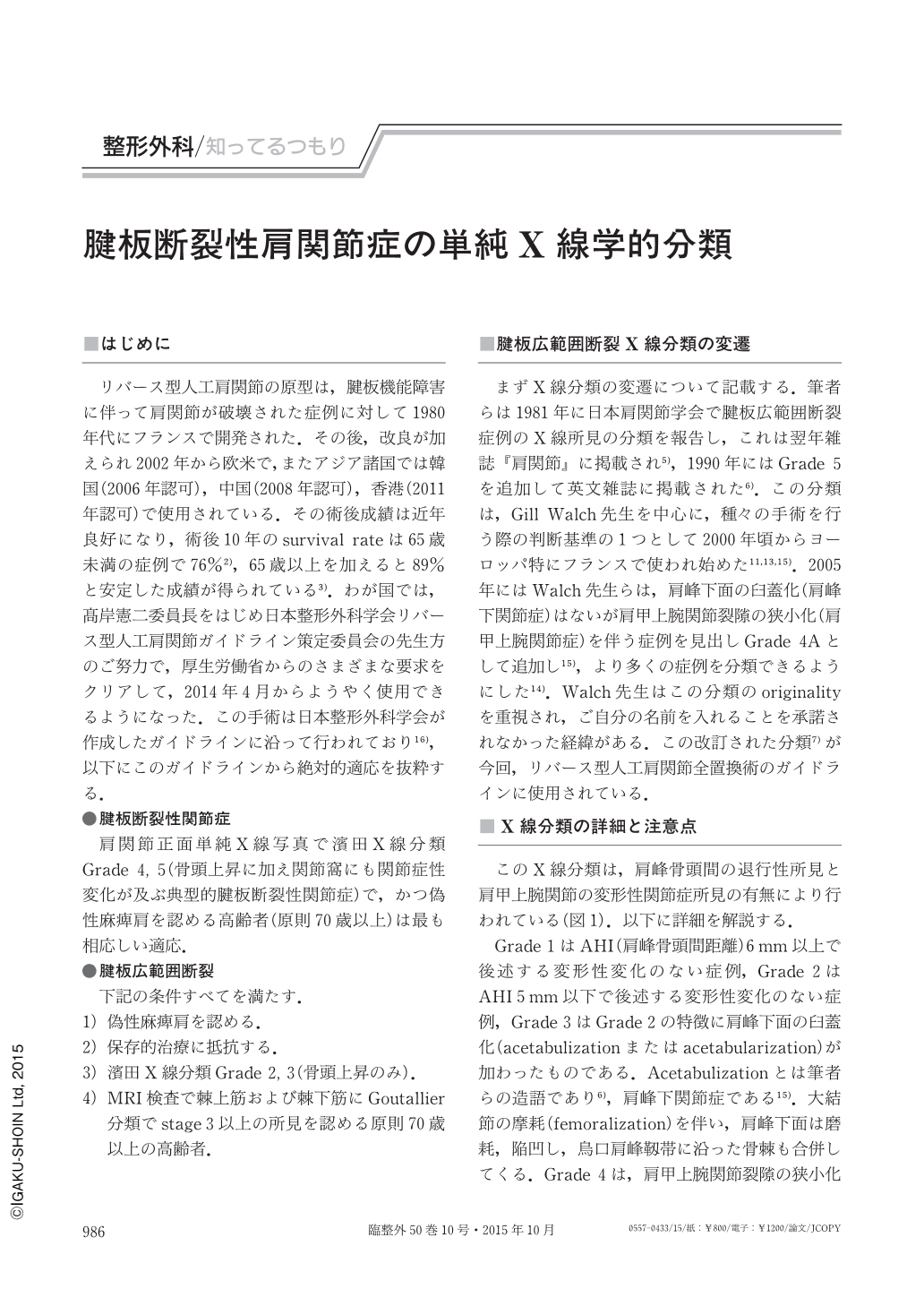1 0 0 0 腱板断裂性肩関節症の単純X線学的分類
はじめに リバース型人工肩関節の原型は,腱板機能障害に伴って肩関節が破壊された症例に対して1980年代にフランスで開発された.その後,改良が加えられ2002年から欧米で,またアジア諸国では韓国(2006年認可),中国(2008年認可),香港(2011年認可)で使用されている.その術後成績は近年良好になり,術後10年のsurvival rateは65歳未満の症例で76%2),65歳以上を加えると89%と安定した成績が得られている3).わが国では,髙岸憲二委員長をはじめ日本整形外科学会リバース型人工肩関節ガイドライン策定委員会の先生方のご努力で,厚生労働省からのさまざまな要求をクリアして,2014年4月からようやく使用できるようになった.この手術は日本整形外科学会が作成したガイドラインに沿って行われており16),以下にこのガイドラインから絶対的適応を抜粋する.
1 0 0 0 投球障害肩における肩甲骨関節窩の軌跡:機能的関節窩について
- 著者
- 村田 亮 黒田 重史 石毛 徳之 荻野 修平 三笠 元彦
- 出版者
- 日本肩関節学会
- 雑誌
- 肩関節 (ISSN:09104461)
- 巻号頁・発行日
- vol.36, no.3, pp.1015-1018, 2012 (Released:2012-10-25)
- 参考文献数
- 11
Background: The scapula rotates upwardly during shoulder elevation. If the rotation center wasn't fixed on the scapula but on the humeral head, the movement of the glenoid would be regarded as the rotation along the humeral head. We have analyzed throwing shoulder injury cases using this concept of “functional glenoid”.Methods: Patients with throwing shoulder injury (TSI group; n=22) and normal control (n=8) were included in the study. Two radiographs were taken of each subject (anteroposterior in internal rotation; IR1, zero position). Two straight lines were drawn from the superior and inferior tubercle to the center of the humeral head in IR1 image, and the angle of the lines was measured (α angle). The TSI group was divided to two groups according to slipping of the humeral head in zero position images. The difference of the glenoid inclination angles between IR1 and zero position (β angle) were then measured, and the glenoid extension ratio (α+β/α) was calculated. Each set of data was statistically evaluated.Results: In the TSI group, β angle and the glenoid extension ratio did not show significant difference compared to the control group, but the slipping-negative cases showed significantly larger β angle than slipping-positive cases and the control group.Discussion: These results may be derived from multifactorial pathology of throwing shoulder injury. Significantly large β angle in slipping-negative TSI cases may indicate an adaptive pattern of movement of the scapula. The glenoid extension ratio could not reflect the scapular kinematic change of throwing shoulder injury.
